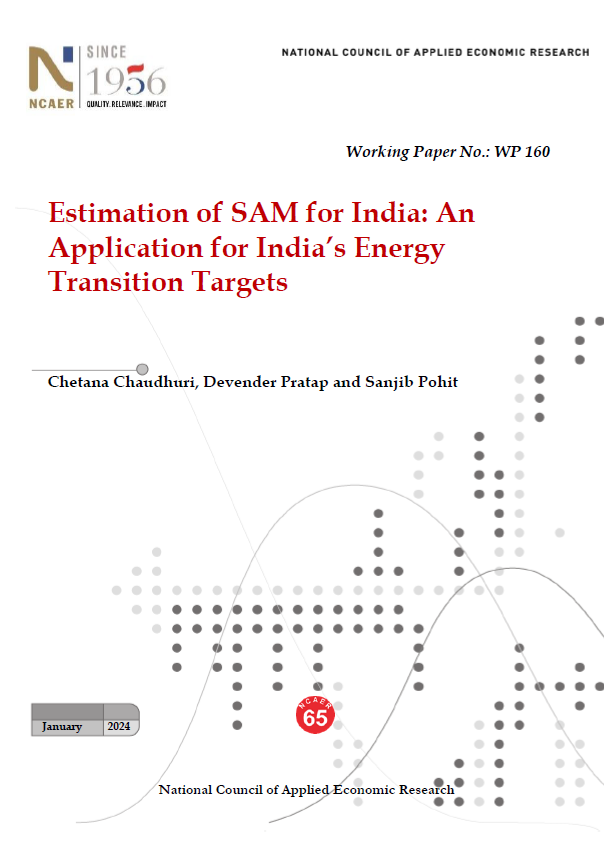Estimation of SAM for India: An Application for India’s Energy Transition Targets
Chetana Chaudhuri
Devender Pratap
Sanjib Pohit
February 2024
The Social Accounting Matrix (SAM) for India was historically constructed based on Input-Output table (IO). But from 2011-12, Government of India, is publishing Supply-Use table, instead of input-output table. While erstwhile Input-Output Table published by Government of India had same number of products and industries, Supply-Use table provides one ‘Supply matrix’ and one ‘Use matrix’, each of which is a rectangular table with 140 products and 66 industries (for 2018-19). Converting the Supply-Use table to a square Input-Output table and subsequently extending it to Social Accounting Matrix require utilisation of various data sources, application of numerous steps and adjustments, and there are not many literatures on it, despite the usefulness of both IO and SAM matrices in macroeconomic policy design. This study aims to bridge the gap by constructing Input-Output Table and Social Accounting Matrix for India from the Supply-Use table incorporating information from many other sources, and describes the method of construction of the matrices. Our IO and SAM also focus on various energy sectors, including different sources of power generation, biomass etc. and disaggregate energy-intensive sectors like cement or aluminium, considering the immense usefulness of the energy-extended macro structure to research of energy and environment policies. The study focuses on construction of a 59×59 SAM for India, with base year of 2021-22 incorporating 3 factors of production and 10 categories of households. As an application of the newly constructed SAM, we have analysed the employment implication of India’s Nationally Determined Contribution (NDC) emission commitments.
Computable General Equilibrium Modelling and Policy Analysis







